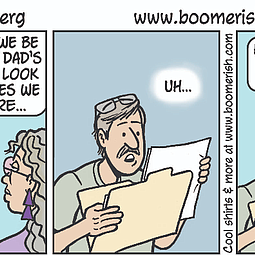Minimizing waste
September 9, 2019 at 10:53 a.m.
Americans produce a substantial amount of garbage. Washingtonians specifically create an average of 6.9 pounds of waste per person per day, according to the Department of Ecology. We’re pretty good about recycling, though: 44% of Washington’s municipal solid waste was recycled in 2016. Reducing the amount of waste disposed of in a landfill, recycling or composting facility not only benefits the environment by saving resources and minimizing greenhouse gas emissions, but can save your household money.
Decades ago during World War II, Americans were encouraged to save materials and collect scrap metal. Things were mostly reused or repaired and very little was thrown out. Soon after, though, the ease and convenience of new packaging and cheap products that could be tossed created a throw-away society. How to get back to this era of reducing, reusing, recycling and repairing can seem daunting to some.
Though studies show that people age 65 and older are more likely than those age 18-34 to believe recycling is the responsible thing to do, many people simply do not know what can or cannot be recycled. This has led to the concept of ‘wishful recycling,’ the process of tossing things in the recycling bin when we aren’t exactly sure it can be recycled, but hoping that it ultimately will be (which is often is not the case).
Consider the minute details of your life and where you might have room to reduce the waste you produce and receive. Do you receive paper bills in the mail that you could switch to receiving by email? Do you take a sandwich in a disposable plastic bag to work every day instead of considering reusable wrapping? The small plastics and paper used in everyday life builds up over time.
How to recycle: Even if you make your best effort in reducing the number of products you purchase and use, you will still have some items to recycle. It can seem pretty simple, but according to the King County Solid Waste Division, over half of materials disposed of in King County could have been recycled. Conversely, half of what is sent to recycling facilities are ultimately disposed of because it cannot actually be recycled or the items are soiled (such as food containers not cleaned out or leftover liquids in containers).
- Learn what can be recycled: the basics of what you can put in your recycling bin falls into a few categories: clean cardboard, steel and aluminum cans, glass, plastics, and mixed paper.
- Learn what can’t be recycled: This means that you cannot recycle plastic bags (such as the ones you take home from the grocery store and Ziploc sandwich bags). You can, however, bring plastic bags back to retail stores that accept them back for reuse (go here for a list of locations). Lead batteries, light bulbs, needles and anything soiled with food or liquid reside, such as soiled paper like disposable coffee cups and pizza boxes cannot be recycled.
- Don’t know where to dispose of something? The King County Solid Waste Division has a searchable list that provides information on how and where to dispose of various commercial and residential materials. Go here for the extensive list.
- Rinse and dry: Recycling soiled food containers is one of the biggest wasteful mistakes made by Washingtonians. Rather than tossing that sour cream or yogurt carton straight in the bin, take a minute to rinse the container thoroughly, then leave it to dry. Anything left with residue in the recycling will be disposed of and end up in a landfill. Residue like liquids left in beverage bottles can also turn other recyclables like cardboard and paper moldy.
- Services available: Curbside recycling pickup is available throughout the greater King County region. Waste Management (1-800-592-9995), Republic Services (206-682-9735) and Recology (206-859-6700) offer recycling and composting services in the area, or check with your local provider.





